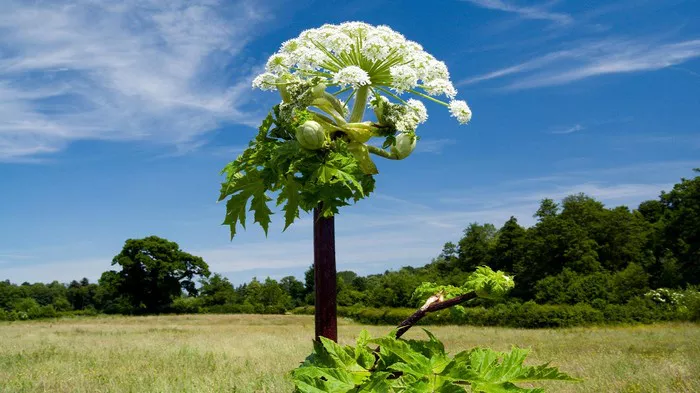A specialized team of abseilers has been deployed to tackle the spread of giant hogweed, an invasive non-native plant, along the banks of the River Tweed. This initiative forms part of ongoing efforts to diminish the plant’s density and presence in the area. Giant hogweed is notorious for its toxic sap, capable of causing severe burns and blisters, with the river serving as a conduit for its seeds.
The Tweed Forum has enlisted the expertise of contracted specialists to manage hogweed in challenging and inaccessible areas. Emily Iles, the forum’s invasive species project officer, explained that giant hogweed was initially introduced to the UK by Victorian plant collectors for botanical collections, unaware of the plant’s subsequent invasive nature.
“The river network provides an ideal transportation route for giant hogweed, as each plant can produce between 20,000 and 50,000 seeds that can lie dormant for many years in the soil,” she stated. Despite the formidable challenges posed by this plant species, decades of concerted control efforts have significantly reduced hogweed populations along the main stem of the River Tweed.
“Our trained volunteers and contractors perform the majority of the work in combating these plants, but occasionally, specialized assistance like that of the abseilers from SAS Rope & Rail is necessary for hard-to-reach areas,” added Iles.
Recently, these experts supported operations near Coldstream on a river stretch. In addition to giant hogweed, the Tweed Forum’s invasive species project targets other problematic plants such as Himalayan balsam, Japanese knotweed, and American skunk cabbage. These plants not only contribute to riverbank erosion and heightened flood risk but also endanger local biodiversity, threatening habitats crucial for salmonid fish species.
The invasive species management forms a pivotal component of the broader £25m Destination Tweed revitalization project, which includes the establishment of a 113-mile trail spanning from the river’s source to its estuary.


